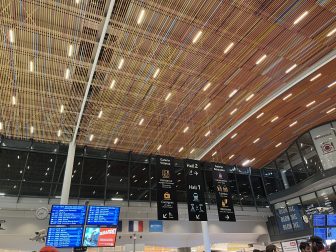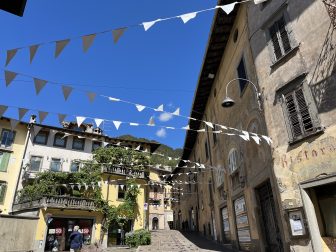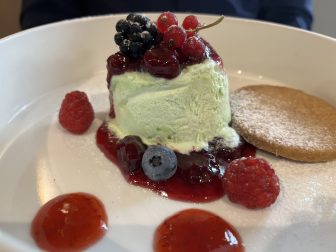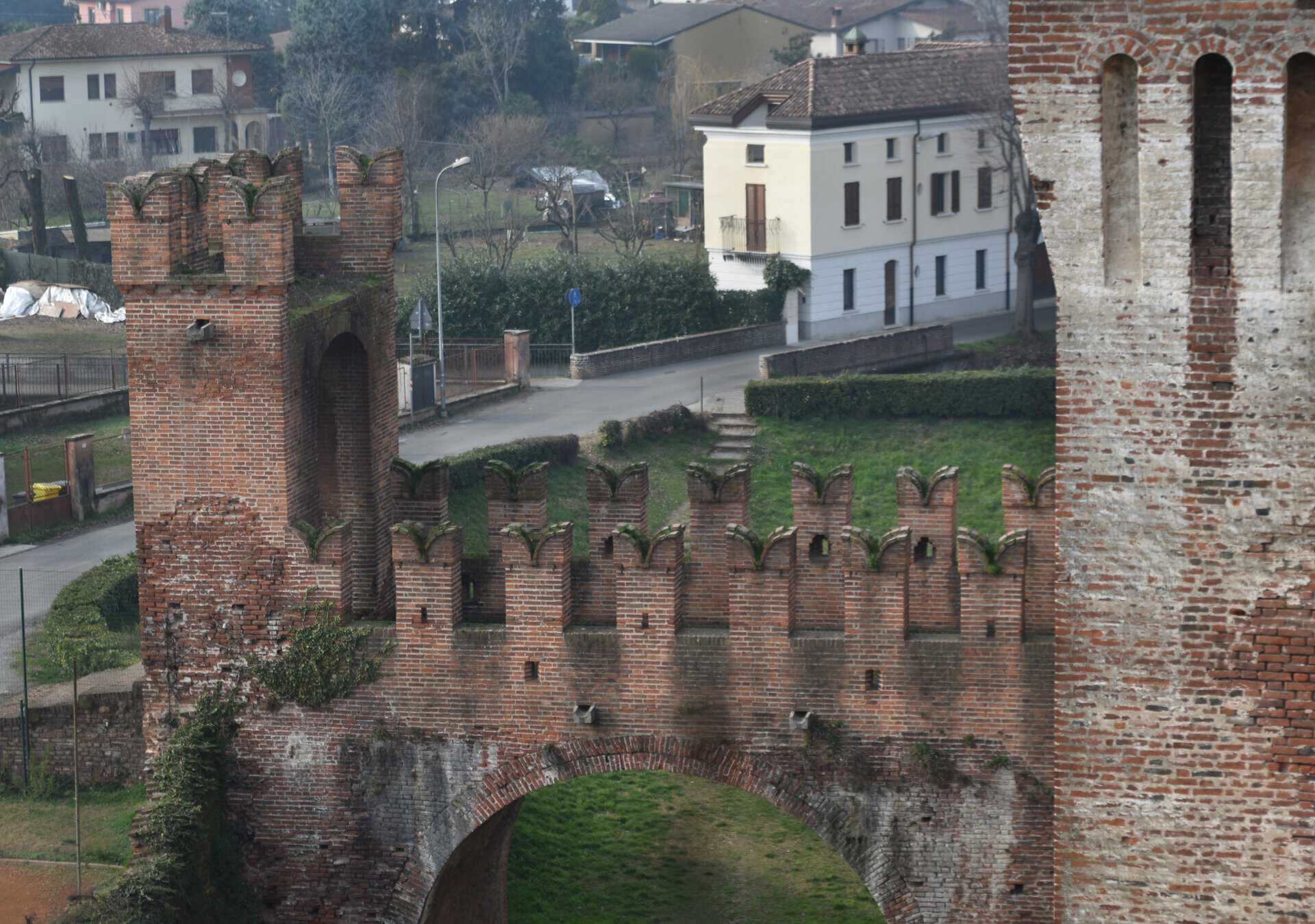
[Feb. 2024] Soncino, a historic town in Lombardy, northern Italy, is also home to a castle called Rocca Sforzesca Castle.
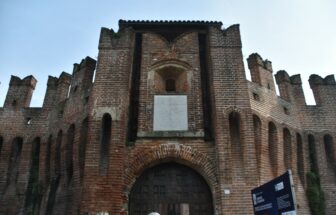
Soncino was under the control of the Duchy of Milan for a long time, but because it was on the border with the Republic of Venice, there were constant battles.
Therefore, the Sforza family, who became Dukes of Milan in the mid-15th century, built a new wall surrounding the town in 1454, and then built this castle in 1473.
We heard at the Printing Museum that Jews were invited to raise funds for the new castle.
According to the pamphlet I received, the line of Dukes of Milan died out in 1535, and Soncino was handed over to the Marquis Stampa family, and the last heir of the Stampa family handed the castle over to the city of Soncino in 1878.
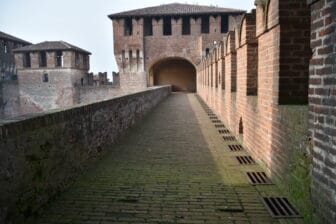
This Rocca Sforzesca Castle, with such a history, is a brick fortress.
It is a building with a strong, unadorned image, with towers and walls with rather hostile unevenness (called “sawtooth”) on the top, rows of small windows, and striped supports below.
We have seen castles of this shape many times.
My husband remembered the Malpaga Castle, and I remembered the Torrechiara Castle in Emilia Romagna.
The town hall of Lugo, also in Emilia Romagna, is also shaped like this.
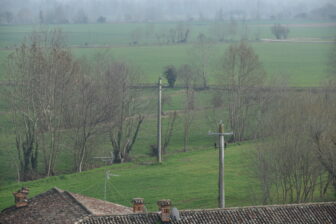
I wonder what this type of architectural style is called?
We walked around part of the wall and looked at the idyllic scenery around.
According to the pamphlet, Soncino gradually became nothing more than a small rural village due to the effects of epidemics, taxes, and wars.
However, in the 19th century, the silk industry flourished.
It seems that several factories were built, and one of them was adjacent to the castle.
There was a silk museum inside, so we took a look inside after leaving the castle.
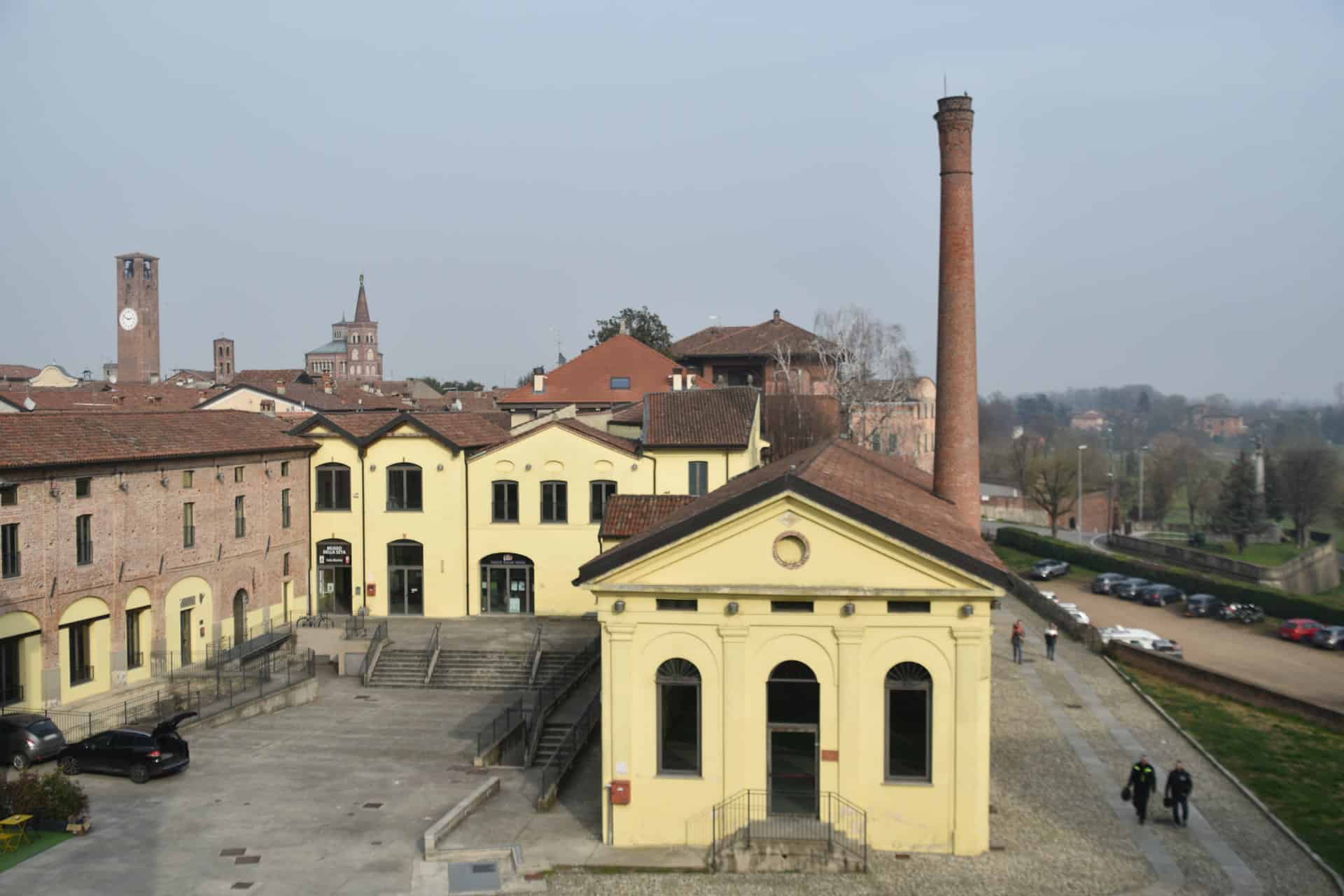
I thought it was a silk weaving factory, but it turns out they raised silkworms and sold the eggs.
According to the information board, women here worked 11 hours a day.
But back then, 14-hour shifts were the norm, so perhaps this factory was a step ahead.
It reminded me of the Italian novel “Seta (silk),” which my husband and I both love, and which was made into a film, but it was set in France, wasn’t it?

